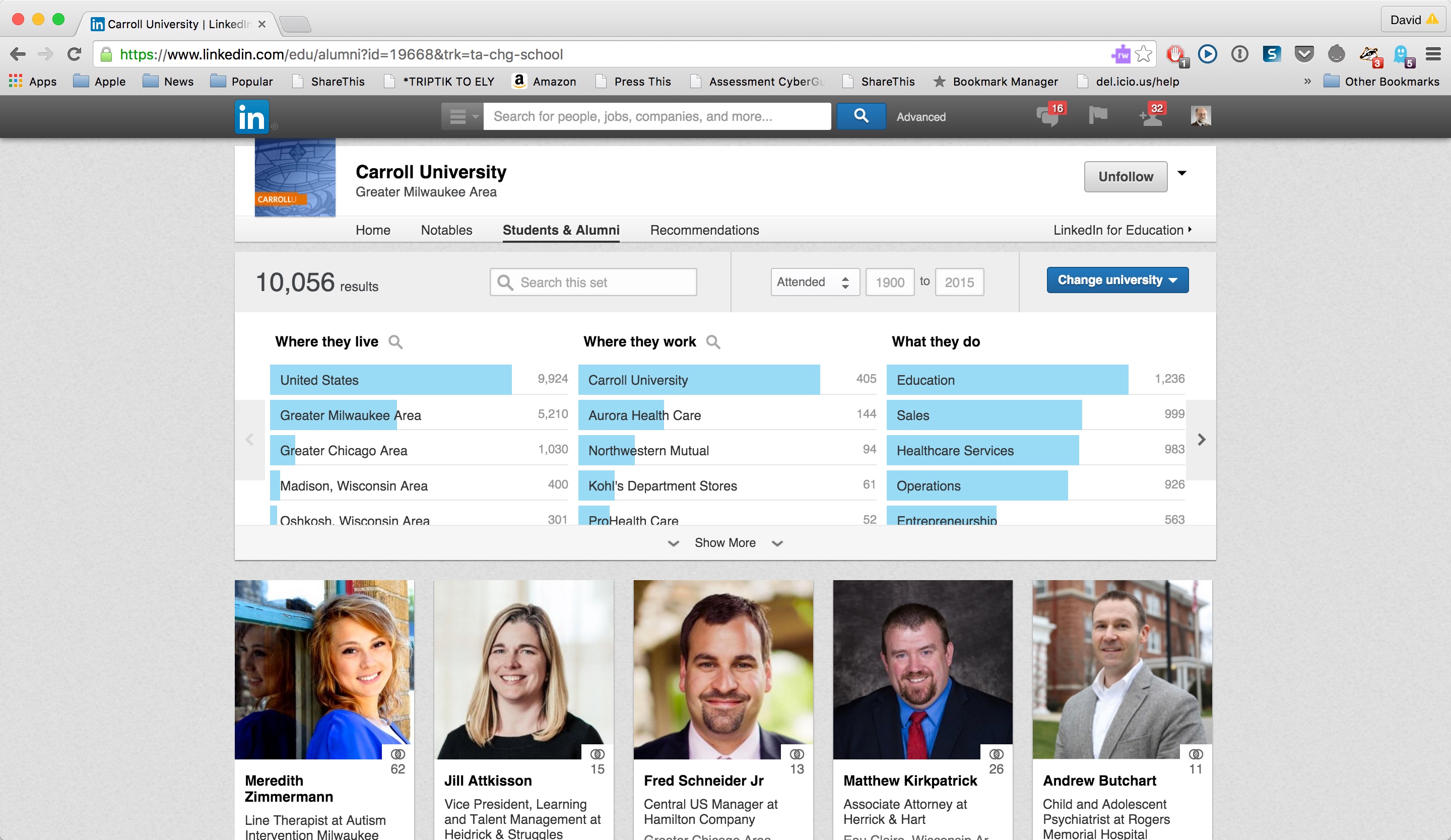
Rapidly growing and expanding, LinkedIn is a social network for professional collaboration that facilitates connecting with classmates, faculty, and colleagues. Users create an online profile and can provide as much information about themselves as they see pertinent. To this profile, users can add “connections” to other individuals and build their online social network. LinkedIn creates a profile comprised of an individual’s professional history, education, and achievements. Similar to a resume but in an online format, this allows other individuals to review your professional endeavors. Through LinkedIn, users potentially are more able to find jobs, locate other individuals in their field of study, and discover business and volunteer opportunities.
Individuals are able to build their image in their professional field by constructing and maintaining professional relationships. Especially for college students looking for connections in the real world, LinkedIn is a valuable tool for individuals searching for internships or for positions in one’s desired career path or to make connections with other individuals who may give them advice or guidance for their future.
To create a LinkedIn profile, an individual can go to the LinkedIn website and create their profile with an email address and password. An individual is then prompted to insert information about themselves such as a brief autobiography, past education experience, and professional work history. Additionally, individuals can enter volunteer experiences or organizations they care about, organizations they are affiliated with, certifications they have received, and a listing of their personal skills. LinkedIn will then organize all of the information onto a profile page. The user can customize where each section of information will fall (e.g. either at the top of the profile or lower down). Other individuals can also endorse the skills you have listed on your profile. This feature is a quick way for connections to validate that the individual is well qualified in the skills they have listed.
One should make a concerted effort to complete as much of their profile as possible. This includes adding a professional profile picture of oneself and even, if one chooses, adding a cover photo that will be displayed behind the profile. LinkedIn provides multiple sections of personal information that allow individuals to demonstrate and expand on who they are. Some of these sections are education, contact information, professional industry, volunteer experiences, and certifications. Completing all the LinkedIn sections both allows one to keep track of their experiences and accomplishments in their life and also helps showcase these talents and skills to other individuals. But remember, do not just throw down quick information to complete each section. Instead, think strategically about word choice and the way you want to communicate your information to others.
Once the profile is up and running, it is time to make connections. By adding connections with other individuals, others will be able to see and explore your profile. What kinds of connections should you make? Some individuals add anyone to increase their connection numbers. Others prefer to make connections only with individuals whom they personally know. The answer is really what you plan to do with these connections. If one simply has hundreds of connections but does not take advantage of what these connections could offer, it defeats the purpose. Connections help individuals stay in contact with old classmates, colleagues or friends, make professional connections for future jobs, receive advice from others in their field of study, explore connections of friends, and share information among groups. With the email address used to create a LinkedIn profile, LinkedIn will automatically suggest connections to individuals in your email list who have a LinkedIn account with that email. One can also look for connections by searching for their name, a company name, a specific industry, or a school name to make further connections. There are so many benefits that LinkedIn provides, but it is up to the individual to leverage how best to take advantage of these features.
LinkedIn also allows individuals to create a custom URL to their profile. The URL that comes with a profile is normally a group of random letters and numbers. In just a couple minutes, one can create a custom URL, such as their name. If the name is already taken, one can try to add a middle initial or add their middle name completely.
One way to get involved in LinkedIn is through groups. Individuals can join professional groups which share information, share advice among members, and post or search for jobs. Groups allow individuals to communicate between one another and to expand their knowledge. It is a great way to meet new individuals and make new connections. Anyone with a LinkedIn profile can create a group that can be customized to the topic they are interested in.
LinkedIn provides a free service but it also has an option for individuals to pay for more features. For college students, the free version of LinkedIn is a great way to put together an online resume but also get a start in exploring the professional world for after graduation.
What are your personal experiences with LinkedIn?
